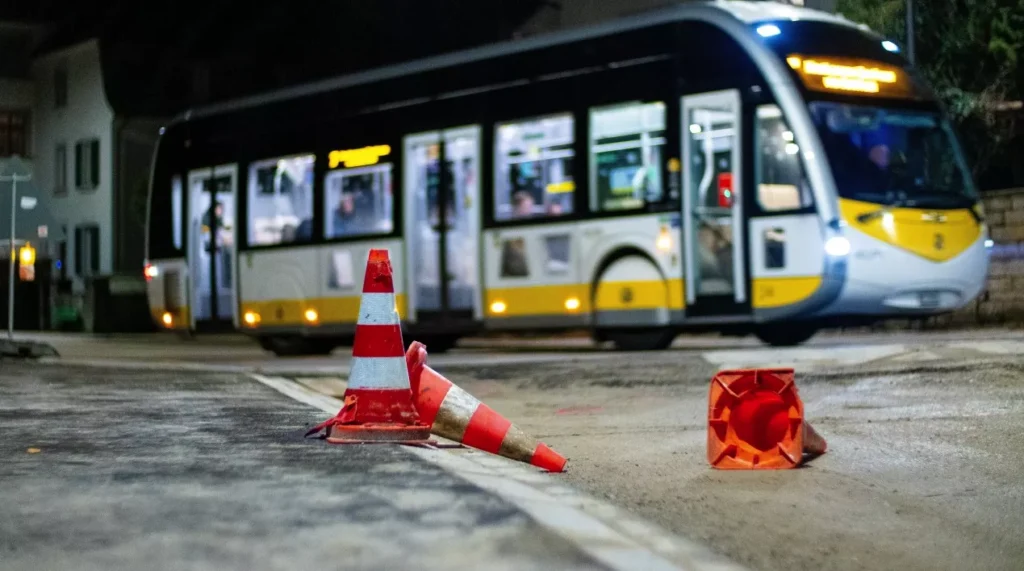










From EVs and batteries to autonomous vehicles and urban transport, we cover what actually matters. Delivered to your inbox weekly.

EVs have gone mainstream, but batteries? Still the bottleneck.
Charging takes too long. Range anxiety is still a thing. And those battery life concerns? Not going away anytime soon.
Enter solid-state batteries. The technology that could double range, cut charging times to 10 minutes, and last 20+ years. Automakers like Toyota, Hyundai, and BYD say we’re just a few years away from seeing them on the road. But history tells us battery hype doesn’t always match reality.
So, what’s the truth? Are solid-state batteries the game-changer they claim to be, or is this just another overhyped delay? Let’s dive in.
Today, we want to shine some light on Bruntor , proving that EV innovation isn’t just about cars. Their electric cargo scooters are zero-emission, bike-lane-friendly, and built for last-mile deliveries. A practical, sustainable solution that’s already reshaping urban mobility. Check them out!
What’s the one thing EV companies keep getting wrong? Their battery promises.
Back in 2010, Toyota promised solid-state batteries would hit the market by 2020. That didn’t happen. Dyson invested $2.6 billion into a solid-state EV project — only to scrap it due to insane production costs and energy density issues.
Fast forward to today, and we’re still waiting. Toyota now says Lexus models will get limited solid-state batteries in 2027, and Hyundai is launching a pilot production line in 2025. Meanwhile, Volkswagen’s QuantumScape partnership is aiming for 2027, but production costs are still 5x higher than lithium-ion.
Translation: We’re closer, but not close enough.
If solid-state batteries do scale, they could dominate 5-10% of the EV market by 2035. But experts agree: unless manufacturing costs fall below $100/kWh, they’ll stay in high-end luxury vehicles.
Right now? That’s not happening before 2030.

🚨 Big Question — Will solid-state batteries ever be affordable for the average EV owner, or are they destined to be a premium feature forever?

🚗 Hyundai Bets Big on Solid-State — But Will It Pay Off?
Hyundai is going all-in with a solid-state battery pilot line launching in 2025. If things go smoothly, we could see SSB-powered Hyundai prototypes on the road by 2026 (TopSpeed).
⚡ Toyota Moves the Goalposts (Again)
Toyota originally promised SSBs in 2020. Now, they’re saying limited deployment in Lexus models by 2027 and broader availability in the 2030s (OptimisticStorm).
🔋 BYD Thinks Solid-State Won’t Stay Luxury-Only
BYD, the world’s second-largest EV maker, believes solid-state batteries will trickle down to mid-range EVs by 2030, but only if cost barriers are solved (Electrek).
♻ Battery Recycling: The Missing Puzzle Piece
Over 550,000 tons of EV batteries will need recycling by 2030. But without major investments, solid-state batteries won’t be any greener than lithium-ion (EY Report).
EVs are going all-electric, but if recycling doesn’t scale, this “green shift” could backfire.

Solid-state batteries have been hyped up as the holy grail of EVs — but are they really?
Yes, they promise a 600+ mile range, 10-minute charge times, and better safety. But big promises don’t always mean fast results.
The reality? We’re still years away from seeing these on mass-market EVs. Let’s bust some myths.
🚫 Reality: Hyundai, Toyota, and Volkswagen are targeting 2030 for large-scale production. Even then, expect them only in premium EVs before prices drop.
If you’re waiting for a $40K EV with solid-state batteries, you’re going to be waiting a long time.
⚠️ Reality: While they reduce fire risks, they still face dendrite formation issues, which can cause short circuits. Harvard researchers claim they’ve solved this, but mass production is another story.
Keep in mind, “safer” doesn’t mean “perfect.” These batteries still have flaws that need years of testing.
💰 Reality: Solid-state production costs could be 5x higher than lithium-ion. Volkswagen’s QuantumScape project admits cost parity won’t happen for another decade.
Expect these batteries in Porsches and Lexuses first — your average EV, not so much.
Want to nerd out even more? This in-depth analysis explains why solid-state batteries are promising—but still far from mass production.
Imagine an EV that charges in 10 minutes, drives 600+ miles, and lasts 20 years. At that point, why would anyone still buy a gas car?
But here’s the catch — solid-state batteries won’t be cheap anytime soon. Unless production costs fall below $100/kWh, they’ll be stuck in luxury EVs while mass-market models keep running on improved lithium-ion tech.
So, what’s more likely?
💡 A world where solid-state EVs dominate by 2035?
⚡ Or another overhyped battery breakthrough that stays out of reach?
📢 Drop your take in the comments! Are gas cars on borrowed time, or is this all just a tech fantasy?